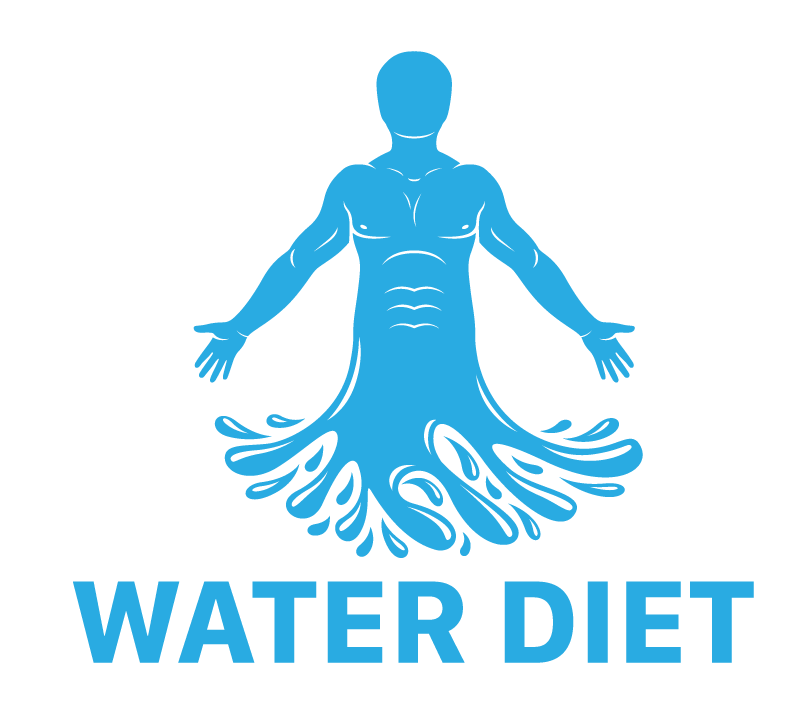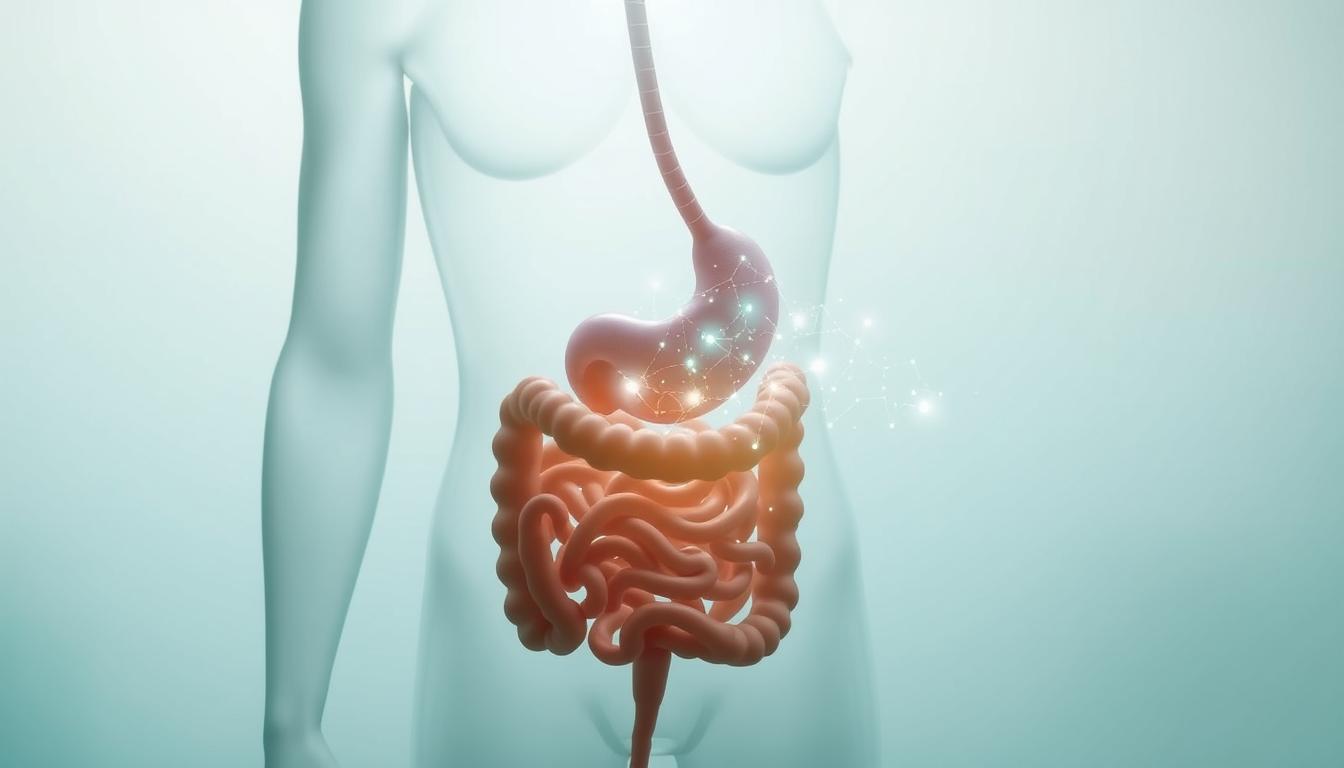Water fasting has been around for thousands of years for both religious and health reasons. It’s important to prepare and execute it carefully to avoid problems. This practice can help with weight management and improve insulin sensitivity. But, it’s crucial to be careful to avoid risks.
By planning well and being aware, we can safely enjoy the benefits of water fasting. This guide will share common mistakes to avoid and how to fast safely.
Key Takeaways
- Gradually reduce food intake before starting a water fast.
- Avoid overeating prior to fasting.
- Maintain proper hydration by drinking at least eight glasses of water daily.
- Choose an appropriate fasting duration; ideally between 24-48 hours.
- Listen to your body and avoid intense physical activity while fasting.
Introduction to Water Fasting: What You Need to Know
Water fasting is an old practice that’s gaining popularity for its benefits in weight loss and improving metabolic health. It means not eating any food but only drinking water. Before you start, it’s important to know the benefits and guidelines of water fasting to do it safely and effectively.
This practice has been around since the 5th century BCE. In the 19th century, it became a medical treatment in the U.S. Since the 1980s, studies have shown how water fasting can help with health issues.
Now, we have modern versions like intermittent fasting. This includes the 5:2 diet and time-restricted eating. The 5:2 diet means eating less on two days a week and normally the rest. Time-restricted eating lets you eat only during a certain time each day. Both methods can lead to better health, like losing weight and improving cholesterol levels.
Here’s a handy comparison of popular fasting practices:
| Fasting Method | Description | Potential Benefits |
|---|---|---|
| 5:2 Diet | Two days of reduced calorie intake (around 20-25% of daily needs) and five days of normal eating | Weight loss, improved insulin sensitivity, reduced inflammation |
| Time-Restricted Feeding | Eating all meals within an 8-12 hour window | Improved metabolic health, weight loss, better appetite control |
| Alternate-Day Fasting | 24-hour fasts alternating with “feasting” days | Weight loss, lower cholesterol, reduced belly fat |
It’s important to understand the guidelines and benefits of water fasting. It can help lower blood pressure, make insulin and leptin more effective, and help manage chronic diseases. But, be aware of the risks like dehydration and losing too much weight. Getting ready is key: eat well before, create a good environment, and know when to stop fasting.
Common Mistakes to Avoid During Water Fasting
When it comes to Effective Water Fasting, knowing the Water Fasting Do’s and Don’ts is key. Many people make mistakes that reduce the benefits or can be harmful. One big mistake is not easing into fasting slowly. Our bodies need time to adjust, and suddenly stopping all food can shock them.
Another mistake is eating too much before fasting. Eating a big meal before can make it harder for our bodies to adjust to no food. Also, not drinking enough water during the fast is a big error. Water is vital for keeping our blood volume up, controlling body temperature, and moving nutrients and waste around.
Many people forget about electrolytes during fasting. Electrolytes are key for muscle function and health. Not getting enough can cause cramps, dizziness, and other problems. Also, starting to eat too much after a fast can mess up digestion and undo the fast’s benefits.
Lastly, doing too much exercise while fasting or ignoring our body’s signals is not good. Too much activity can lead to exhaustion and ruin the fasting experience. Listening to our body and reducing exercise intensity helps the fast work as it should.
In short, a careful and balanced approach helps us dodge these common mistakes. Staying hydrated, keeping an eye on electrolytes, and easing into and out of fasting can greatly improve our fasting experience.
Not Preparing Properly for Water Fasting
Starting a water fast without proper prep can be risky. A good Water Fasting Preparation plan makes the transition smoother and safer. We’ll look at two key steps: slowly cutting down on food and getting fasting essentials ready.
Gradually Reduce Food Intake
It’s key to slowly cut back on food before a water fast. Suddenly stopping can shock your metabolism. Using the 16/8 Method or 24-Hour Fasting can help your body adjust. These methods have eating windows and fasting periods to ease into it.
Another way is Calorie Restriction. You eat normally for five days and eat fewer calories for two days a week. This helps your body get ready for a full water fast safely.
Stock Up on Essentials
Getting your environment ready for fasting is as important as getting your body ready. Make sure you have plenty of water and electrolyte supplements. Drinking at least eight glasses of water a day is key during a water fast.
Also, having hydrating foods like cucumbers and watermelon is good for after the fast. These foods help rehydrate you and give you light, easy-to-digest nutrition. This prevents problems and makes fasting easier.
Doing thorough Water Fasting Preparation and getting all your Fasting Essentials ready can make your fasting journey successful and sustainable. Having a Safe Fasting Transition reduces risks and supports your health in the long run.
Overeating Before Starting Your Fast
Many people make the mistake of eating too much before starting a fast. They think eating a lot beforehand makes fasting easier. But, this mistake can actually cause problems.
Eating too much can lead to digestive discomfort and make blood sugar levels go up. High blood sugar can make you feel hungrier and crave more during the fast. To follow Effective Water Fasting Practice, it’s important to eat balanced meals that give you energy slowly. Don’t eat too much just to save calories.

A 2023 review in *Nutrients* found that intermittent fasting can improve your life, reduce tiredness, and lower IGF-1 levels. IGF-1 can speed up tumor growth. But, these benefits are lost if you don’t eat well before fasting. Eating a balanced meal before is key. Mills, a nutrition expert, suggests using a hunger and fullness scale from zero to 10 to avoid eating too much.
| Nutrition Tips | Before Fasting | During Fasting | Post-Fasting |
|---|---|---|---|
| Hydration | Drink about 2 liters of water daily | Continue consistent water intake | Gradually reintroduce water-rich foods |
| Food Types | Non-starchy veggies, lean proteins, whole grains | No solid food, only water (options like herbal tea if approved) | Soft, nutrient-dense foods |
| Calories | Consume adequate calories through balanced meals, avoiding less than 1,200 calories per day | Zero-calorie beverages only to avoid breaking the fast. | Start with light soups, smoothies, and easily digestible foods |
| Special Notes | Emphasize intuitive eating based on hunger/fullness sensations | Consider supplementing with vitamins without sugar or fillers | Avoid large meals immediately after fasting |
Following these tips helps avoid eating too much and makes fasting more effective. In short, eating well before a fast is key to a successful experience.
Ignoring Hydration Needs During the Fast
It’s easy to forget how important maintaining proper hydration is during water fasting. Not paying attention can cause headaches, dizziness, and even serious health problems. Staying hydrated during your fast is key for a successful and safe experience.
Importance of Water
Drinking enough water is crucial during your fast. Aim for at least 64 ounces a day to avoid dehydration and its bad effects. Hydration helps remove toxins and supports important body functions for your health.
Fasts can make you lose more water and electrolytes, like potassium. So, it’s vital to keep an eye on how much water you drink.
Hydrating Foods
Eating hydrating foods can help you stay hydrated during water fasting. Foods like watermelon and cucumber are great because they’re full of water and nutrients. They’re good to eat during feeding windows, especially if you’re doing intermittent fasting or coming out of a fast.
Hydration isn’t just about drinking water. It’s also about balancing electrolytes. Sodium and potassium help keep fluids balanced and nerves working right. Eating foods like leafy greens, nuts, seeds, and avocados can help you stay hydrated.
Duration of Water Fasting: Finding the Right Balance
Starting a water fast means knowing the right Water Fasting Duration for safety and effectiveness. Studies show it can last from 24 to 72 hours. But, longer fasts should be watched by doctors. It’s important to balance health gains with avoiding risks.
When picking the right fasting time, think about your health and goals. A 24 to 48-hour fast can boost insulin sensitivity and lower bad fats. But, going over 48 hours without a doctor’s watch can cause muscle loss and nutrient gaps. Be careful not to go beyond Safe Fasting Limits to avoid feeling dizzy, tired, or dehydrated.
Staying hydrated is key to safe fasting. Studies suggest drinking 2 to 3 liters of water a day during a fast to prevent dehydration. Food usually gives us about 20% of our daily water. This keeps us hydrated and helps our muscles and organs work right.
Knowing the different fasting methods helps pick the best one for you. For example, the 16/8 method means fasting for 16 hours and eating for 8 hours. Or, you could try juice fasting with fruit and vegetable juices. Each type has its benefits and should fit your life and health.
Here’s a table to show you the benefits and risks of different fasting times:
| Fasting Method | Duration | Key Benefits | Potential Risks |
|---|---|---|---|
| Intermittent Fasting (16/8) | 16 hours fast / 8 hours eating window | Weight loss, improved insulin sensitivity | Initial hunger pangs |
| 24-Hour Water Fast | 24 hours | Lower triglyceride levels, potential heart health | Dizziness, fatigue, risk of dehydration |
| 72-Hour Water Fast | 72 hours | Improved insulin sensitivity, possible reduction in inflammation | Dangerous blood pressure changes, muscle loss without supervision |
In conclusion, finding the right balance in fasting duration is key to getting benefits while staying safe. Always talk to a doctor before a long water fast, especially if you have health issues or special dietary needs.
Choosing the Wrong Time for Intense Physical Activity
Doing intense physical activity during fasting can be hard on our bodies. It’s key to balance Water Fasting and Exercise to keep us healthy.
The Department of Health and Human Services suggests 150 minutes of moderate activity or 75 minutes of vigorous activity weekly for most adults. But, we need to adjust this during a water fast to keep our energy up and avoid health issues.
Our body’s response to intense physical activity during fasting is important. Weight changes and hormonal shifts, especially in women, can cause water retention and energy loss. Eating very few calories can lead to losing muscle and a slower metabolism.
Listening to Your Body
Combining Water Fasting and Exercise works best by responding to body signals. We should notice signs like feeling tired, dizzy, or weak to know our limits. The American Heart Association’s heart rate zones help us figure out how hard to exercise:
| Exercise Type | Target Heart Rate (% of Max HR) |
|---|---|
| Moderate | 50% – 70% |
| Vigorous | 70% – 85% |
We should change our routines based on how we feel. For example, start with weights that make you tired after 12 to 15 reps. This helps avoid overdoing it and follows guidelines for different activities.
It’s all about matching our activity with our body’s needs, especially when fasting. For more on staying hydrated, check out this helpful guide on hydration needs.
Breaking the Fast Improperly
Breaking a water fast needs careful planning to avoid stomach upset and ease back into eating normally. Start by eating foods that are easy to digest and don’t cause a spike in blood sugar. This helps keep your blood sugar and insulin levels stable, which is key to keeping the good effects of fasting.
Slowly add foods that are full of nutrients to your diet after fasting. This can make your fasting benefits even better.
Types of Foods to Eat
Begin with small amounts of food that are easy on your stomach when you break your fast. Bone broth is a great choice because it’s full of nutrients and easy to digest. Eggs are also good, giving you complete protein to help your body recover.
Adding foods high in healthy fats and proteins is important after fasting. Avocados are full of healthy fats, fiber, and nutrients, helping with nutrition and feeling full. Fish, especially fatty types like salmon, gives you lean protein and is good for your heart. For plant-based options, nuts and nut butters are packed with protein and healthy fats, making them a tasty and nutritious pick.
Slowly add complex carbs like sweet potatoes, beans, and oats to your diet for more energy and fiber. This helps your digestive system after fasting. It’s also key to drink plenty of water or herbal teas to keep your electrolytes balanced and help with digestion.
| Food Type | Examples | Benefits |
|---|---|---|
| Proteins | Eggs, Fish | Complete protein, heart health |
| Electrolyte-Rich Fruits | Bananas, Apples | Restore natural balance |
| Healthy Fats | Avocados, Nuts | Satiety, blood sugar control |
| Complex Carbohydrates | Sweet potatoes, Beans, Oats | Sustained energy, fiber |
For more details on avoiding common mistakes and ensuring successful Water Fasting Results, you can check out this link for extensive insights: overcome hurdles common mistakes to avoid on the water.
Not Monitoring Electrolyte Levels
Many people forget to keep an eye on Electrolyte Management during water fasting. Not having the right levels of electrolytes can cause serious health problems. These include muscle cramps, feeling very tired, and even harm to your heart and kidneys.
Electrolytes like sodium, potassium, magnesium, and calcium are key to keeping our bodies balanced. If we ignore this balance, it can ruin our fasting experience.
To keep a steady Water Fasting Electrolyte Balance, adding Electrolyte Supplements for Fasting or eating foods high in electrolytes is a good idea. Foods like bone broth, coconut water, and a bit of pink Himalayan salt can help a lot.
Here’s a closer look at the important electrolytes and why they matter:
| Electrolyte | Importance | Risks of Imbalance |
|---|---|---|
| Sodium | Helps control fluid balance, nerve and muscle function | Fatigue, muscle weakness, heart rhythm problems |
| Potassium | Keeps nerves and muscles working right, supports heart health | Heart racing, muscle cramps, feeling dizzy |
| Magnesium | Needed for over 300 enzyme reactions, muscle and nerve function | Muscle cramps, heart issues, feeling tired |
| Calcium | Crucial for muscle movements, keeping blood vessels healthy | Muscle spasms, feeling confused, heart rhythm problems |
Watch out for signs of electrolyte imbalance, like constant tiredness, headaches, muscle cramps, and feeling dizzy. These signs mean you might need to change what you’re eating. While Electrolyte Supplements for Fasting give you exact amounts, foods like bone broth offer a natural way to get electrolytes but in less predictable amounts.
It’s smart to talk to a doctor before starting a fast. They can help you make a plan that makes sure you get the right electrolytes. Let’s take care of our health by keeping an eye on our electrolyte levels during Water Fasting Electrolyte Balance and managing them well for a better fasting experience.
Letting Stress Compromise Your Fast
Managing stress during a water fast is key for success. High cortisol levels can mess with digestion and lessen fasting benefits. We’ll look at how cortisol affects digestion and how to manage stress well.
Cortisol and Digestion
The cortisol impact on fasting is big, as it can mess up how our bodies use nutrients. High cortisol can cause digestive problems, making fasting less effective. Studies show that high cortisol slows down metabolism and digestion, making fasting harder.

Stress Management Techniques
Good fasting stress management methods are key to keep cortisol down. Yoga, meditation, and deep breathing can help keep cortisol low, improving fasting. Planning for stressors ahead can also help reduce stress.
Here’s a look at how three fasting methods did over six months:
| Group | % Participants | Key Observations at Month 6 |
|---|---|---|
| iTRE | 40.7% | Significant drop in post-meal glucose levels (-10.10 mg/dl*min), lower triglycerides, and more weight and fat loss. |
| CR | 39.7% | Some betterment in post-meal glucose levels (-3.57 mg/dl*min), lower blood pressure. |
| Standard Care | 19.6% | Least improvements, higher fasting triglycerides, and less weight loss. |
In conclusion, handling stress and water fasting well can greatly improve your fasting experience. By keeping cortisol low with stress management, we can make fasting more successful and beneficial.
Conclusion
As we wrap up this Water Fasting Recap, it’s clear that following Effective Fasting Strategies is key. To get the most out of fasting and stay safe, we should avoid mistakes like not preparing enough, not drinking enough water, eating too much before starting, exercising too hard during the fast, and not breaking the fast right. Being careful and planning ahead are our strongest tools.
We talked about the importance of eating less before fasting and having everything we need ready. Drinking enough water is crucial, especially when fasting. It’s important to know how long to fast and not to overdo it with exercise. Keeping an eye on our electrolytes and managing stress are also key.
Short-term, water fasting can lead to weight loss, lower blood pressure, and better cholesterol levels. But, keeping these benefits long-term is not sure. Water fasting can also make us lose muscle, especially in older people. The refeeding phase is a crucial step in our fasting journey. Starting with liquids and then adding steamed veggies and healthy fats helps us ease back into eating normally. By listening to our bodies and following these steps, we can make water fasting work for us, not against us.
Source Links
- 10 Fasting Mistakes To Avoid For Better Health | Full Guide
- Avoid “THIS” When You’re Fasting…
- 10 Intermittent Fasting Mistakes People Make And How To Avoid Them
- What You Should Know About Fasting
- Water fasting: Benefits, Weight Loss, and How to do it
- Common Mistakes People Make with Intermittent Fasting
- Doctor shares tips on intermittent fasting, common mistakes to avoid
- The five common mistakes people make when intermittent fasting
- Intermittent Fasting Do’s and Don’ts: Common Mistakes to Avoid
- Water Fasting – The Benefits, How Long To Fast, And How To Fast Safely
- Intermittent Fasting: 10 Common Mistakes
- 9 intermittent fasting errors, from eating too little to exercising too much
- What Breaks a Fast? Foods, Drinks, and Supplements
- 7 Prolonged fasting mistakes that could derail your progress
- Do You Need Electrolytes While Fasting | KeyNutrients
- Do you absorb water through the skin during dry fasting? Aquaporins
- Should You Try Water Fasting?
- Are You Making These Mistakes When Fasting? – Thin MD Med Spa
- 15 Common Mistakes When Trying to Lose Weight
- Can you sing while you work out?
- Water Fasting: How It Works, Benefits, and Dangers
- Potential Effects of Prolonged Water-Only Fasting Followed by a Whole-Plant-Food Diet on Salty and Sweet Taste Sensitivity and Perceived Intensity, Food Liking, and Dietary Intake
- How To Break A Fast The Right Way: A Comprehensive Guide
- Electrolytes For Fasting: Essential Tips For Maintaining Balance
- Is Water-Only Fasting Safe?
- Intermittent fasting plus early time-restricted eating versus calorie restriction and standard care in adults at risk of type 2 diabetes: a randomized controlled trial – Nature Medicine
- Microsoft Word – Contrast_Manual_2023_Calculating eGFR_Gadopiclenol_Corrections Ellis
- Q&A: Pros and cons to water fasting
- 5 Day Water Fast — My Experience




